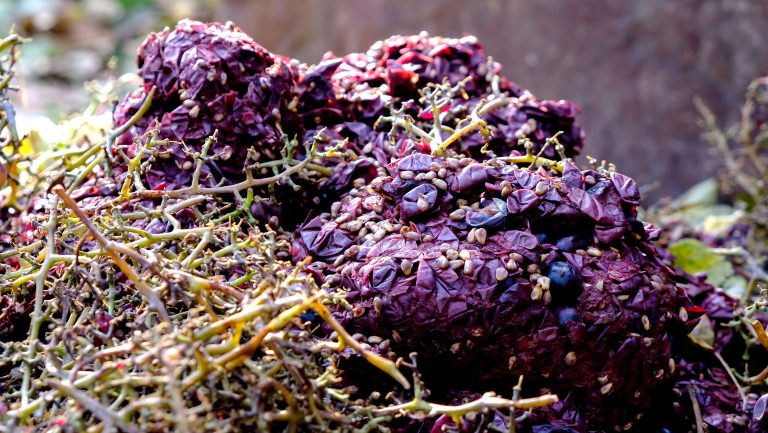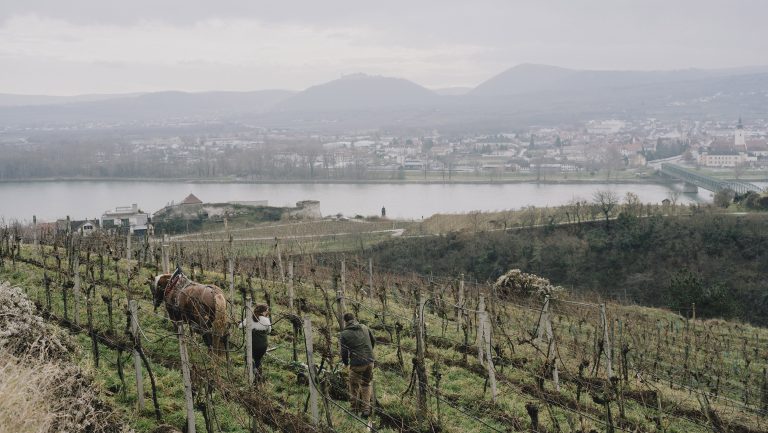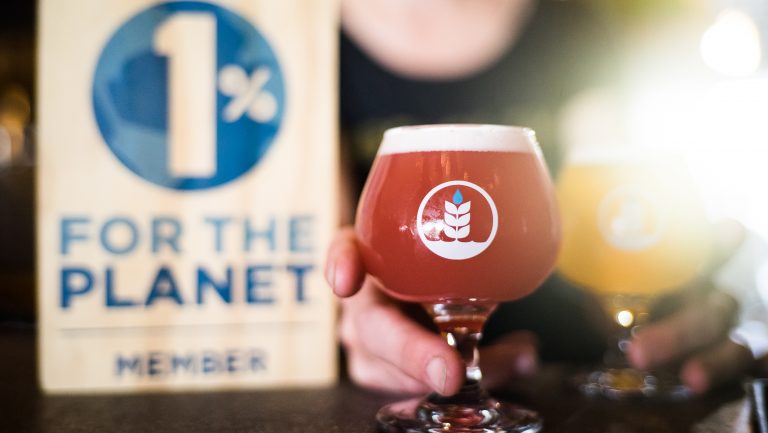Tom Gamble with Gamble Family Vineyards in Napa is a farmer first and has always had a “waste not, want not” mentality. So even though he knew dropping fruit was essential to making the concentrated Cabernet Sauvignon people expect from California, the practice really bothered him.
Then in 2012, the winemaking team came up with an idea. Using a process called flash détente, which extracts color and flavor from grapes by heating them in a device that looks like a large pressure cooker, it might be possible to take that partially ripe fruit and make wine from it. Their first attempt at using the process made a product good enough to sell on the bulk market. They did that for several more years, until Gamble realized how much people liked the wine from his green harvest, and found himself saying, “Let’s keep this margin for ourselves and start a wine program around it.”
Today, The Mill Keeper, which includes up to 20 percent wine made with the flash détente process, is nearing the size of the Gamble Family line. The more affordable bottling has allowed Gamble to capture a different segment of the market and provided some economic stability in tough times. “It basically saved our bacon during COVID-19 because it was an appealing wine at a good price point,” he says. The steady income allows Gamble more time to focus on increasing the quality of the Gamble Family wines.

Don’t miss the latest drinks industry news and insights. Sign up for our award-winning newsletters and get insider intel, resources, and trends delivered to your inbox every week.
Gamble isn’t the only winemaker who’s found there are economic, environmental, and sometimes social benefits to reimagining waste. Disposing of wastage can be a significant expense but instead this approach creates new profit centers—and potentially more jobs. There’s also an obvious environmental benefit to lowering the volume of disposed grapes or juice: Food waste is one of the biggest drivers of climate change, accounting for an estimated eight percent of all human emissions. The UN says that if food waste were a country, it would be the third-largest emitter in the world. When all of these things are taken together, it’s no wonder an increasing number of winemakers and private businesses are looking to transform grape waste from an afterthought into a central part of their business.
Keeping Juice Brings New Revenue
At Villicana Winery and Vineyard in Paso Robles, California, Alex Villicana was less worried about dropped fruit and more concerned about the free-run press juice he discarded in droves. Grapes such as Mourvèdre and Grenache can produce notoriously pale wine when all the juice is left on the skins. As a result, it’s common for winemakers to leave only some of the pressings in fermentation tanks and throw away the rest.
“Since I farm the vineyard myself, it drove me crazy,” says Villicana. “I saw 30 to 40 percent of my work going down the drain.” The situation was doubly frustrating because “in an effort to make the best wine, we pull out what is arguably the best juice prior to fermentation.”
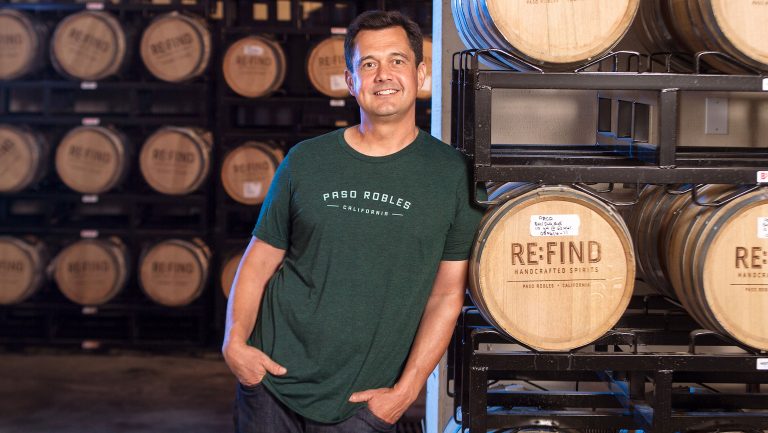
Villicana explored using the juice for brandy, but it was too low in acid. That also made it a poor option for premium rosé, another solution winemakers sometimes turn to. Then he stumbled across some research saying wine grapes could be transformed into vodka. Two years later, in 2011, he opened Re:Find Distillery with the goal of using 100 percent of the grapes he farms.
At first, Villicana worked with his juice only, but by the third year, he began buying used discarded free-run juice from other local winemakers. (“We try not to use the word waste because this is incredible grape juice we’re working with,” he notes.) Wineries were getting paid for something they were discarding before. “It’s grown to be about 75 percent of our business, when I originally thought it was going to be a small side project,” says Villicana.
Today, Re:Find makes numerous spirits, including vodka, whiskey, and gin, and works with around 30,000 gallons of liquid a year, which translates to approximately 200 tons of grapes. “That’s an 80- or 90-acre vineyard that was being farmed and then the grapes were thrown away,” he says. “Think about all the water, manpower, diesel, and other resources that takes!”
Bethany Kimmel, the owner and winemaker of The Color Collector in Oregon’s Columbia River Gorge, also found herself with some subpar fruit in 2020. The fires that year rendered a portion of the Pinot Noir she acquired unusable. Rather than pouring it out, she had the smoke-tainted juice distilled into brandy so she could create vermouth. She knew that winemakers had traditionally treated distillation of their grapes as a last-ditch solution for imperfect wine. The distillation process removes many of the phenolics from the wine, taking the smoke flavor with them.
Dumping the smoke-affected wine would have been financially devastating for her small startup. Instead, she turned it into an income stream. The vermouth project also allowed Kimmel to keep the embodied energy in the fruit. “There’s an entire growing season of inputs in the vineyard,” she points out. “To just let that fruit sit after all the labor and resources that went into farming it doesn’t feel like the best use of resources. I feel like there was a responsibility to honor that effort and make the wine.”
Winemaking and the Circular Economy
Grape waste can be composted, but that isn’t necessarily returning it to its highest and best use—a critical component of the circular economy model that’s been popular in Europe for many years and is becoming more prominent in the U.S. Instead, materials should be treated as resources and remanufactured into useful products whenever possible.
A desire to put the circular economy into practice led Adega Mayor in Alentejo, Portugal, to partner with Âmbar, a biocosmetics startup, to create a line of 100 percent natural moisturizing creams called OR. The hand lotion and body cream are enriched with grapeseed oil from wine grapes and shea butter, both rich in nutrients that nourish and protect skin.
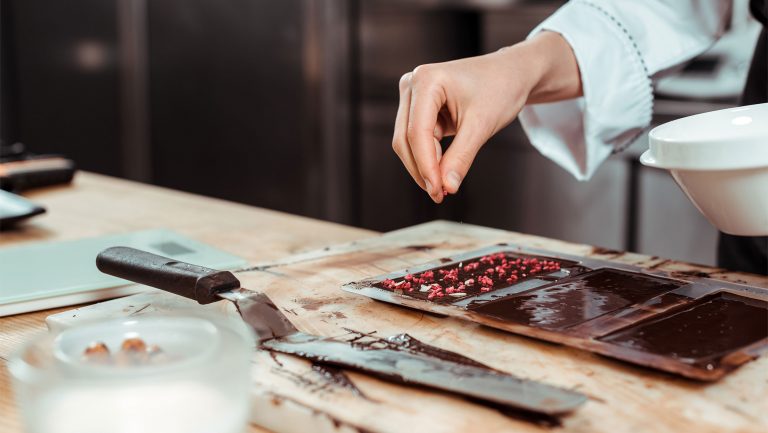
“The creation of the OR brand emerged very naturally to challenge Adega Mayor to go beyond its core business—wine—while innovating and strengthening its commitment to environmental sustainability,” says CEO Rita Nabeiro. “Environmental sustainability is part of Adega Mayor’s DNA. We value the continuity of a responsible business, so besides being aware of the environmental, social, and economic impacts of our activity, we make a clear commitment to contribute to the sustainable development of our business.”
Sonomaceuticals, a company founded by Peggy Furth, the former proprietor of Chalk Hill Estate Vineyards, and Barbara Banke, the chair of Jackson Family Wines, has been operating with a similar mindset since 2009. The women started the company with the goal of putting the significant volume of the grape pomace that Jackson Family discards every year to its highest and best use.
Early in the company’s history, it had researchers at the USDA test the eight grapes produced at Jackson Family to see which had the highest health benefits. Despite the fact that black grapes such as Cabernet Sauvignon are known to contain healthy compounds such as anthocyanins, the researchers determined that Chardonnay pomace had the most health benefits, including improving liver and cardiovascular health.
Sonomaceuticals began cleaning and drying Chardonnay skins and seeds and turning it into a powder it calls WellVine. The hope is to one day use the material in health supplements that benefit the gut microbiome.
In the meantime, another discovery about the Chardonnay pomace led to a different consumer-focused product. “We discovered that not only does it go well with chocolate, it has something in it that tempers the bitterness of dark chocolate,” says Sonomaceuticals CEO Scott Forsberg. It makes dark chocolate, which is full of beneficial flavonoids, easier for the average person to consume. WellVine Chardonnay marc can now be found in Vine to Bar chocolate.
Using Co-products to Improve Human and Planetary Health
Selena Wang, Ph.D., and Daniela Barile, Ph.D., researchers at the University of California, Davis’s Food Science and Technology Department, have also lent a hand to the WellVine research. Their recently published study created a comprehensive chemical breakdown of the bioactive compounds that deliver the health benefits in Chardonnay marc.
Previously, Dr. Wang and Dr. Barile had done extensive research on olive oil pomace and the whey created by cheese production, respectively. The shared goal in all three projects is the desire to create something new and healthy from the co-product of a manufacturing process. From an environmental standpoint, using discarded grape skins and seeds in a product is much better than sending them to a landfill.
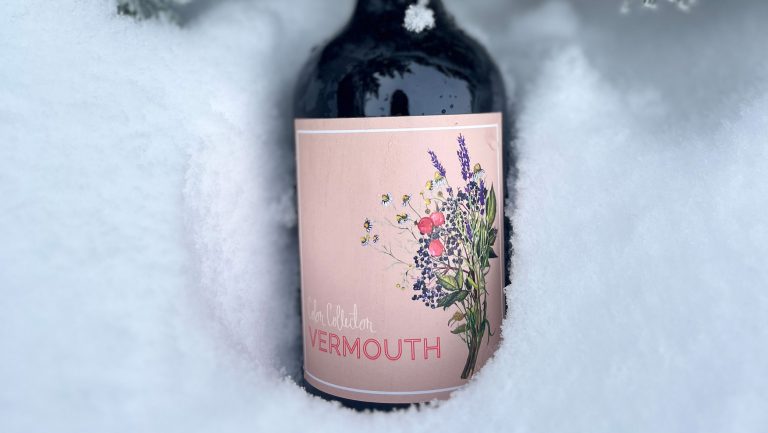
Supplements containing probiotics and other beneficial properties are needed, and they will be developed eventually, says Barile, who adds, “If you don’t take them from the waste, you take them from the primary product.” When they must be taken from the main product, be it wine grapes or cocoa beans, you end up depleting your primary product or increasing plantings of these products, which eliminates the space available for valuable wildlands. As Gamble says, “If you’re maximizing the sustainable yield of your vineyard, you don’t need more vineyards.”
The economic benefits of upcycling waste can be huge. Barile estimates that 30 percent of the initial mass of grapes collected for winemaking is disposed of. If that transforms from an expense to a revenue source, it could make a big difference for winemaking businesses. She points to the progress made by the dairy industry with regards to whey, which now has enough valuable applications that “there’s more money in whey than cheese—they reversed the equation.” (Wheyward Spirit is one example of whey’s new applications.)
Wang is excited to continue studying the synergy between oligosaccharides and phenols, which seems to be one of the reasons products like Chardonnay marc deliver such impressive health benefits. “All the research we’re doing now is paving the way to look at how we can take advantage of material to make more than one product and make something that’s healthier for us,” she notes.
“Waste not, want not” may be a farmer’s philosophy, but it makes good business sense. The whole concept of waste is a relatively new one. Combining that old idea with the information and technology available to today’s business owners is a winning formula—one that can make wine growers and winemakers more money, bring positive publicity, and improve the planet.

Dispatch
Sign up for our award-winning newsletter
Don’t miss the latest drinks industry news and insights—delivered to your inbox every week.
Sophia McDonald is a freelance writer who lives in Eugene, Oregon. Her work has appeared in numerous publications and on websites, including Wine Enthusiast, Eating Well, Sip Northwest, and 1859 Oregon’s Magazine.

